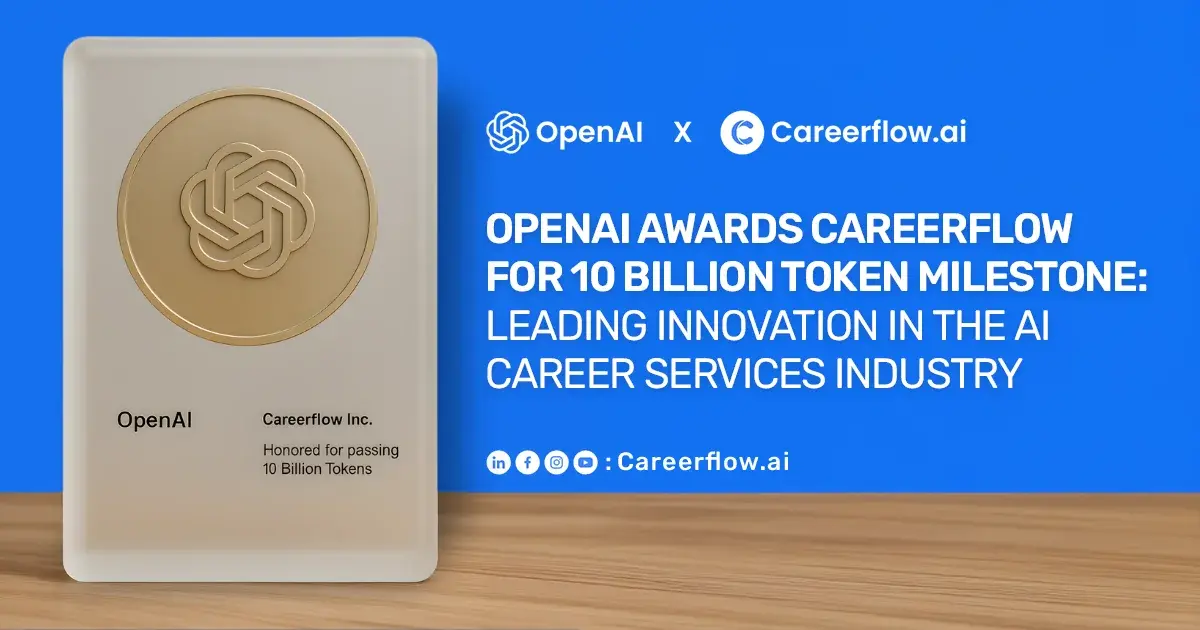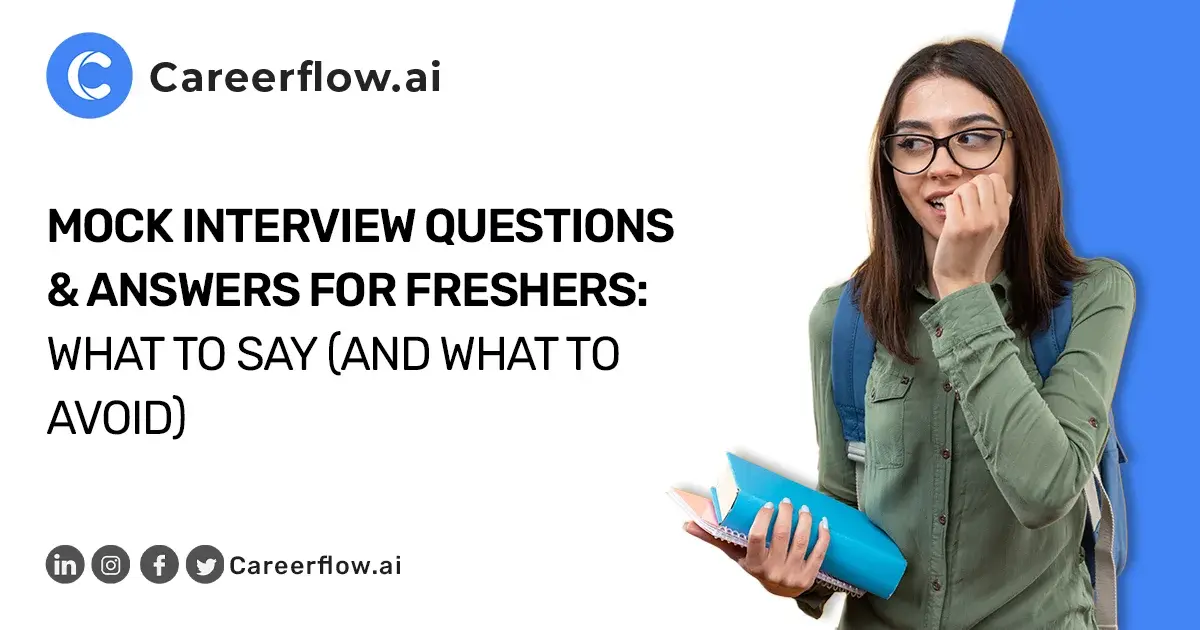When you're eager to land that perfect internship, one of the first and often most confusing hurdles is figuring out how to present your skills and experiences on your resume. Resume formats aren't exactly intuitive, and for many, crafting that professional resume format can be quite confusing. But don't worry – you're in the right place! This guide is specifically designed for aspiring interns like you, who might have minimal prior experience with resumes but are packed with potential.
Once you finish reading, you'll feel confident in selecting the best resume format for your unique situation, setting you up for success. We will provide the best options and guide you in crafting a resume that stands out.
Why Resume Format Matters for Internship Applications
Consider your resume format as a storefront showcasing your skills and potential. It's not only about what you've accomplished; it's also about how you present that information. This is particularly important when applying for internships, where you may not have extensive formal work experience.
The right format serves as a spotlight, emphasizing your strongest assets—such as your education, relevant projects, specific skills, or leadership roles. A well-organized structure makes it easier for both human recruiters and Applicant Tracking Systems (ATS) to quickly understand your background. In a job market where recruiters often spend just six seconds scanning a resume, presenting your information in a clean, logical, and impactful manner greatly increases your chances of being noticed.
Ultimately, your resume's format is your first opportunity to demonstrate attention to detail and professionalism. These are not just buzzwords; they are highly sought-after qualities that hiring managers look for in promising internship candidates. Choose your format wisely, and you'll make a strong first impression.
The Top 3 Resume Formats to Consider
Selecting the appropriate resume format is similar to choosing the ideal outfit for an important occasion; it establishes the tone and showcases your best qualities. For those applying for internships, it is crucial to understand these three main formats to create a strong impression:
1. Reverse Chronological Resume
This is by far the most common and widely accepted resume format. It prioritizes your most recent experiences, listing them first and working backward. If you've got relevant part-time jobs, previous internships, significant volunteer roles, or leadership positions from school, this format lets you showcase your progression and responsibilities clearly. Recruiters love it because it’s easy to scan and quickly understand your career trajectory, even if that trajectory is just beginning.
2. Functional Resume
A functional resume is a skills-based approach, putting your capabilities and competencies front and center rather than your employment timeline. This can be a strategic choice if you’re making a significant career pivot or if your job experience is truly minimal or fragmented. However, be aware: while it emphasizes what you can do, recruiters sometimes view functional resumes with doubt as they can unintentionally hide employment gaps or a lack of direct work history. Use this one with caution and only if your skills are exceptionally strong and highly relevant.
3. Hybrid (Combination) Resume
Often the best choice for students and new graduates, the hybrid resume (also known as a combination format) offers the best of both worlds. It thoughtfully blends elements of both the chronological and functional styles. With a hybrid format, you can strategically list your core skills and strengths prominently at the top, immediately grabbing attention. This is then followed by a clear, chronological timeline of your relevant work, internship, or academic experience. This flexibility allows you to highlight your abilities while still providing the essential context of your journey, making it incredibly clear and compelling for internship applications.
Why Hybrid and Reverse Chronological Formats Are Ideal for Internships
When you're applying for an internship, you want your resume to clearly tell a compelling story about your potential, even if your professional experience is still growing. This is precisely why the Hybrid and Reverse Chronological formats stand out as ideal choices.
These formats excel at helping you showcase your academic background, relevant extracurricular activities, and impactful personal projects in a way that feels important, rather than making you appear underqualified. They're also highly ATS-friendly, meaning Applicant Tracking Systems can easily parse your information, and they're easy for recruiters to navigate. Because they largely follow a traditional layout, recruiters can quickly find the sections they care about most, like Education and Skills, significantly increasing your chances of getting past that crucial initial scan.
What truly makes these formats shine is their flexibility. They empower you to strategically highlight whatever is most relevant for each specific internship application. Whether it's specialized coursework, impactful club leadership roles, relevant part-time jobs, or impressive independent projects, you can emphasize what aligns best with the role, ensuring your unique strengths are front and center.
✅Example 1: Reverse Chronological Resume
This format works best if you have some experience, even if it's not direct professional work. Think part-time jobs, significant volunteer roles, or strong leadership positions in clubs.
[Your Name]
[Your Phone Number] | [Your Email] | [Your LinkedIn Profile URL] | [Your Portfolio URL (if applicable)]
Education:
Bachelor of Science in Computer Science | University Name, City, State Expected Graduation: May 2026
- Relevant Coursework: Data Structures, Algorithms, Web Development, Database Management
- GPA: 3.8/4.0
- Dean's List: Fall 2023, Spring 2024
Experience:
Web Development Intern | Tech Solutions Inc. | City, State May 2025 – Present
- Collaborated with a team of 3 developers to build and maintain client websites using HTML, CSS, and JavaScript.
- Assisted in debugging code, reducing reported errors by 15% through meticulous testing.
- Gained hands-on experience with responsive design principles and cross-browser compatibility.
Student Ambassador | University Name, Admissions Office | City, State September 2023 – May 2025
- Led campus tours for prospective students and families (200+ individuals), effectively communicating university culture and programs.
- Represented the university at 5+ college fairs, engaging with over 100 potential applicants.
- Developed strong public speaking and interpersonal communication skills.
Skills
- Programming Languages: Python, Java, JavaScript, C++
- Web Technologies: HTML, CSS, React, Node.js, SQL
- Tools: Git, VS Code, Microsoft Office Suite, Adobe Photoshop
- Languages: Spanish (Fluent)
✅Example 2: Hybrid Resume
This format is fantastic for interns because it lets you lead with your skills, and then provide the context of your education and project history. It's perfect if your experience is primarily academic or project-based.
[Your Name]
[Your Phone Number] | [Your Email] | [Your LinkedIn Profile URL] | [Your Portfolio URL (if applicable)]
Summary/Objective Highly motivated Computer Science student with a passion for software development, seeking a Summer 2026 Software Engineering Internship. Eager to apply strong problem-solving abilities and foundational knowledge in data structures and algorithms to contribute to innovative projects and gain practical industry experience.
Core Competencies
- Programming: Python (Advanced), Java, C++, SQL
- Web Development: HTML5, CSS3, JavaScript, React.js
- Data Analysis: Pandas, NumPy, Matplotlib
- Software/Tools: Git, Docker, VS Code, Agile Methodologies
- Soft Skills: Problem-Solving, Team Collaboration, Communication, Project Management
Education:
Bachelor of Science in Computer Science | University Name, City, State Expected Graduation: May 2026
- Relevant Coursework: Object-Oriented Programming, Database Systems, Operating Systems
- GPA: 3.7/4.0
Projects:
Online Bookstore Application | Personal Project November 2024 – January 2025
- Developed a full-stack e-commerce application using React for the frontend and Node.js with Express for the backend.
- Implemented user authentication, product browsing, and shopping cart functionality, storing data in a MongoDB database.
- Utilized Git for version control and deployed the application to Heroku.
"EcoTracker" Mobile App Concept | University Capstone Project September 2024 – December 2024
- Collaborated with a team of 4 to design and prototype a mobile application aimed at tracking personal carbon footprints.
- Conducted user research, created wireframes, and developed mockups using Figma, presenting findings to faculty.
Experience:
Student Researcher (Volunteer) | University Robotics Lab | City, State January 2024 – May 2024
- Assisted graduate students in data collection and analysis for a project on autonomous navigation systems.
- Learned basic robotics concepts and contributed to weekly progress reports.
What to Include in an Internship Resume
Crafting an effective internship resume means highlighting your potential and relevant experiences, even if you don't have an extensive work history. Here's a breakdown of essential sections and what to emphasize in each:
✅Start with a Professional Summary: Begin with a concise and effective resume summary. This brief paragraph should immediately communicate your degree program, specific career goals, and your most relevant key strengths. It's your elevator pitch, designed to grab the recruiter's attention from the outset.
✅Prioritize Education Details: Place your education section prominently. Include your degree, the name of your university, your expected graduation date, and your GPA if it's 3.5 or higher. Don't forget to list any academic honors like Dean's List or scholarships, as these showcase your dedication and achievement.
✅Feature Relevant Coursework and Projects: Even without formal work experience, your academic journey offers valuable insights. Add a section for relevant coursework or impactful class projects that demonstrate you've already engaged with concepts or tools directly related to the internship's requirements. This shows initiative and foundational knowledge.
✅Create a Dedicated Skills Section: Include a clear section for your skills and tools. This is where you list proficiency in software, programming languages, specific communication platforms, or any relevant certifications. Be precise and list skills relevant to the roles you're targeting.
✅Showcase All Relevant Experiences: Don't limit yourself to paid jobs. Volunteer work, club activities, freelance gigs, or school leadership roles are all valuable. Format these experiences just like formal jobs, using bullet points to describe your responsibilities and achievements. Crucially, include quantifiable results whenever possible (e.g., "Organized a fundraising event that raised over $500 for local charity").
✅Use Strong Action Verbs: Under each entry, use concise bullet points to describe your responsibilities and achievements. Begin each point with a strong action verb (e.g., "Developed," "Managed," "Analyzed," "Collaborated") to make your contributions impactful and easy to read.
Formatting Best Practices
Beyond content, the visual presentation of your resume significantly impacts its effectiveness. Adhering to these formatting best practices ensures your resume is professional, easy to read, and ATS-friendly:
- Keep it Concise: Aim for a one-page resume, especially if this is your first internship or job application. Recruiters spend limited time on each resume, so conciseness is key.
- Choose Professional Fonts: Stick to standard, easy-to-read fonts like Arial, Calibri, or Helvetica. Maintain a font size between 10.5 to 12 pt for body text to ensure readability.
- Maintain Consistency: Consistent formatting is paramount. Ensure uniform bullet points, indentation, and line spacing throughout the entire document. This attention to detail reflects professionalism.
- Save as PDF: Always save your resume as a PDF file unless the application specifically requests a different format. PDF ensures your layout remains consistent across all devices and operating systems.
- Avoid ATS Disruptors: Steer clear of visual elements that can confuse Applicant Tracking Systems. This includes using tables, multiple columns, excessive icons, or photos within the main body of your resume. Keep it clean for machines.
- Use Bold Text Strategically: Employ bold text strategically for section headers (like "Education," "Experience," "Skills") and job/role titles to improve scannability and draw the reader's eye to key information.
Use AI Tools to Format and Customize Faster
In today's competitive internship landscape, efficiency and precision are your best friends. Leveraging AI-powered tools can significantly streamline your application process, allowing you to create polished, customized materials without the usual time drain.
✅Careerflow’s AI Resume Builder
This tool lets you select a modern template specifically designed for ATS compatibility and optimized for internship applications, taking the guesswork out of formatting.
Take advantage of the built-in AI suggestions to effortlessly create customized bullet points that perfectly match your target role's requirements. This ensures your achievements resonate with recruiters.
Applying to different industries or positions? No problem. The builder allows you to duplicate and edit your resume within the tool, letting you generate multiple tailored versions quickly and efficiently.
Boost your chances of passing automated screenings by matching keywords from internship listings directly within the AI interface. This subtle yet powerful technique ensures your resume aligns with what recruiters (and their software) are looking for.
✅AI Cover Letter Generator
For a truly professional submission, combine your optimized resume with a tailored cover letter generated by the AI Cover Letter Generator. This ensures consistency and a strong, cohesive application.

✅Job Tracker
Finally, utilize the Job Tracker to meticulously log all your internship applications, track follow-ups, and keep every version of your resume perfectly organized. This means no more lost files or forgotten deadlines.
By integrating these AI tools into your process, you'll not only save time but also significantly enhance the quality and relevance of every application you submit.
Final Tips for Submitting a Standout Internship Resume
When you're ready to hit "submit," ensure your internship resume is as polished and impactful as possible. Remember to tailor every single resume to the specific internship you're applying for by aligning your professional summary, keywords, and skills directly with the job description.
Once you have customized your resume, proofread it at least twice. Ideally, have a peer or mentor review it to catch any errors you may have overlooked. Focus on clarity rather than flashy design; your resume should be effective and easy to read.
Where possible, use metrics to highlight the scale and impact of your achievements. For example, instead of just saying "Led a team," you could say, "Led a team of four peers to complete a semester-long client presentation, resulting in a proposed solution being adopted by the client."
Finally, make it a habit to revisit and update your resume regularly, especially as you acquire new skills, complete new courses, or finish major projects. This will ensure that your resume always reflects your most current and relevant qualifications.
Embarking on the internship search is an exciting journey, and every step you take, from perfecting your resume to applying strategically, brings you closer to your goals. It's a competitive world out there, but with dedication and these tips, you're not just applying—you're making a strong case for yourself. Remember, every "no" is just redirecting you to a better "yes." Keep learning, stay persistent, and trust in your abilities! We're rooting for you! ✨🚀 Good luck!


.webp)






